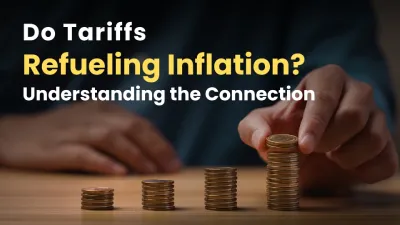简体中文
繁體中文
English
Pусский
日本語
ภาษาไทย
Tiếng Việt
Bahasa Indonesia
Español
हिन्दी
Filippiiniläinen
Français
Deutsch
Português
Türkçe
한국어
العربية
Japan’s Wholesale Inflation Slows for 8th Month, Stays Above Target
Abstract:In the latest economic update from Japan, the nation’s wholesale inflation rate exhibited a continuing trend of deceleration in August, marking the eighth consecutive month of decline. This development is likely to be received with relief by households and retailers alike, who have been grappling with the ramifications of earlier sharp spikes in the costs of raw material imports.

In the latest economic update from Japan, the nations wholesale inflation rate exhibited a continuing trend of deceleration in August, marking the eighth consecutive month of decline. This development is likely to be received with relief by households and retailers alike, who have been grappling with the ramifications of earlier sharp spikes in the costs of raw material imports.
The key metric in focus here is the corporate goods price index (CGPI), a gauge that tracks the prices companies levy on each other for their products and services. In August, the CGPI registered a 3.2% increase compared to the same period in the previous year. This figure aligns with the expectations of the markets median forecast.
Notably, this August figure represents a decline from the revised 3.4% upswing observed in July. Furthermore, it signifies a substantial retreat from the pinnacle of a 10.6% surge recorded back in December of the preceding year, as per data sourced from the Bank of Japan (BOJ).
The ascent in wholesale prices, which was originally instigated by the surge in global commodity costs last year, compounded by the weakening yen, has had a ripple effect on consumer inflation in Japan. Many companies have passed on the escalated costs to households, thereby contributing to higher consumer prices.
It is pertinent to highlight that while consumer inflation has steadfastly remained above the BOJs target of 2% for more than a year, the central bank remains resolute in emphasizing the necessity to uphold a loose monetary policy stance. This stance is to be upheld until a shift occurs from the current supply-driven inflation to a demand-driven price increase. In essence, the BOJ is looking for sustainable economic factors and consumer demand to drive inflation, rather than relying on supply chain disruptions and commodity price fluctuations.
This ongoing pattern of easing wholesale inflation in Japan underscores the complexity of the nations economic landscape. Policymakers and analysts will continue to closely monitor these trends, as they seek to strike a balance between stimulating economic growth and ensuring price stability in the coming months.

Disclaimer:
The views in this article only represent the author's personal views, and do not constitute investment advice on this platform. This platform does not guarantee the accuracy, completeness and timeliness of the information in the article, and will not be liable for any loss caused by the use of or reliance on the information in the article.
Read more

Why Fed Keeps Interest Rates Unchanged, How Does It Affect To Forex Market?
Fed keeps interest rates at 4.25%–4.50%, impacting forex market. Dollar may rise as tariffs loom. Explore why rates unchanged and forex effects.

Do Tariffs Refueling Inflation? Understanding the Connection
Investigate how tariffs impact inflation. Learn how trade barriers influence prices and the broader economic landscape.

Will Trump's Trade Policies Fuel Inflation? BlackRock Warns of Economic Risks
Bitcoin and crypto prices plummet as recession fears and inflation warnings shake markets. Experts warn of prolonged economic challenges ahead.

How Will Central Bank Digital Currencies Could Shape Everything?
Central bank digital currencies (CBDCs) could reshape financial stability, addressing inflation, banking risks, and monetary policy challenges.
WikiFX Broker
Latest News
Exposing the Top 5 Scam Brokers of March 2025: A Closer Look by WikiFX
Gold Prices Climb Again – Have Investors Seized the Opportunity?
Webull Launches SMSF Investment Platform with Zero Fees
Australian Regulator Warns of Money Laundering and Fraud Risks in Crypto ATMs
FCA Warns Against 10 Unlicensed or Clone Firms
CySEC Warns Against 14 Unlicensed Investment Websites
Top Currency Pairs to Watch for Profit This Week - March 31, 2025
Will natural disasters have an impact on the forex market?
Philippines Deports 29 Indonesians Linked to Online Scam Syndicate in Manila
AI-Powered Strategies to Improve Profits in Forex Trading
Currency Calculator







